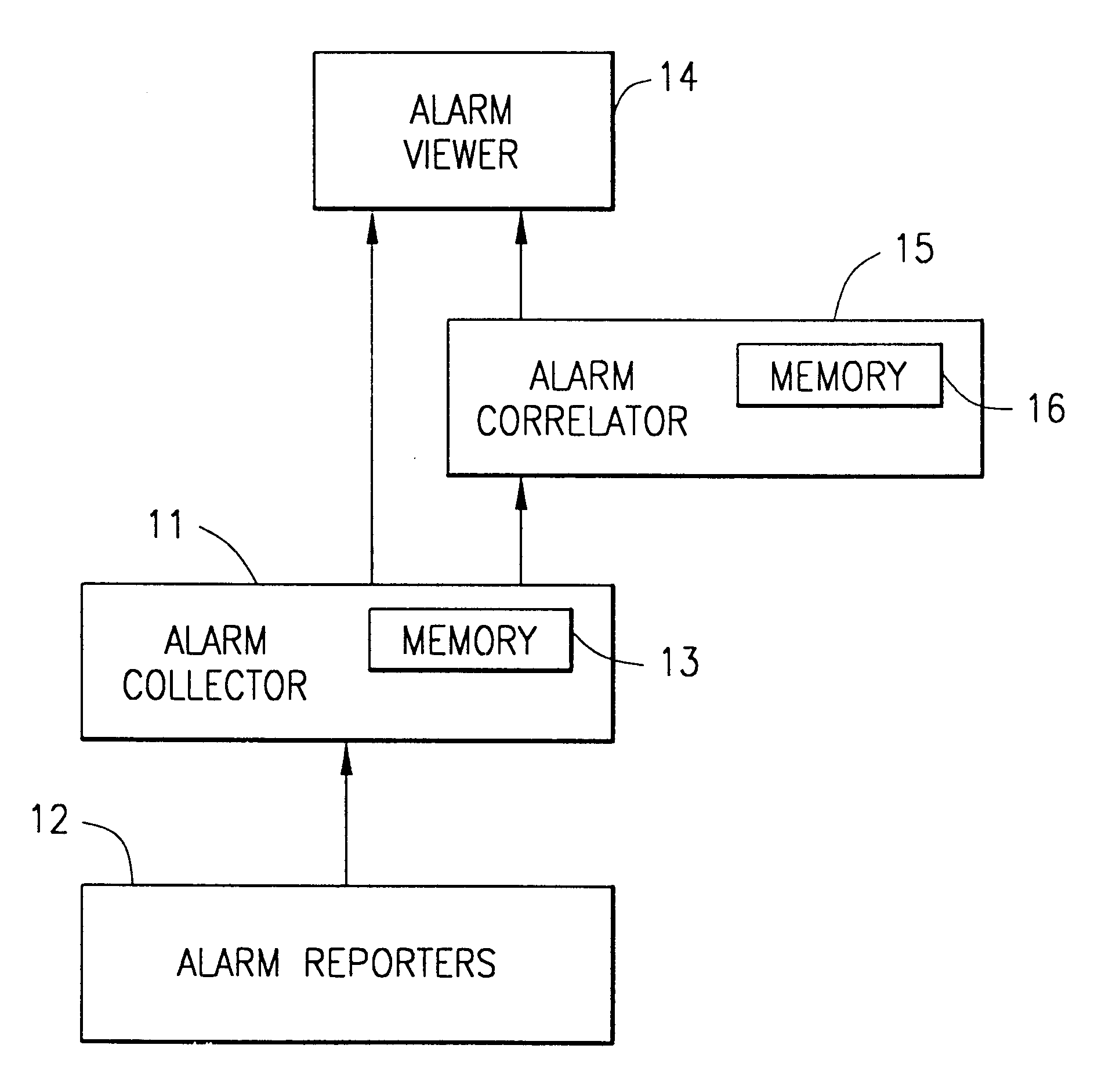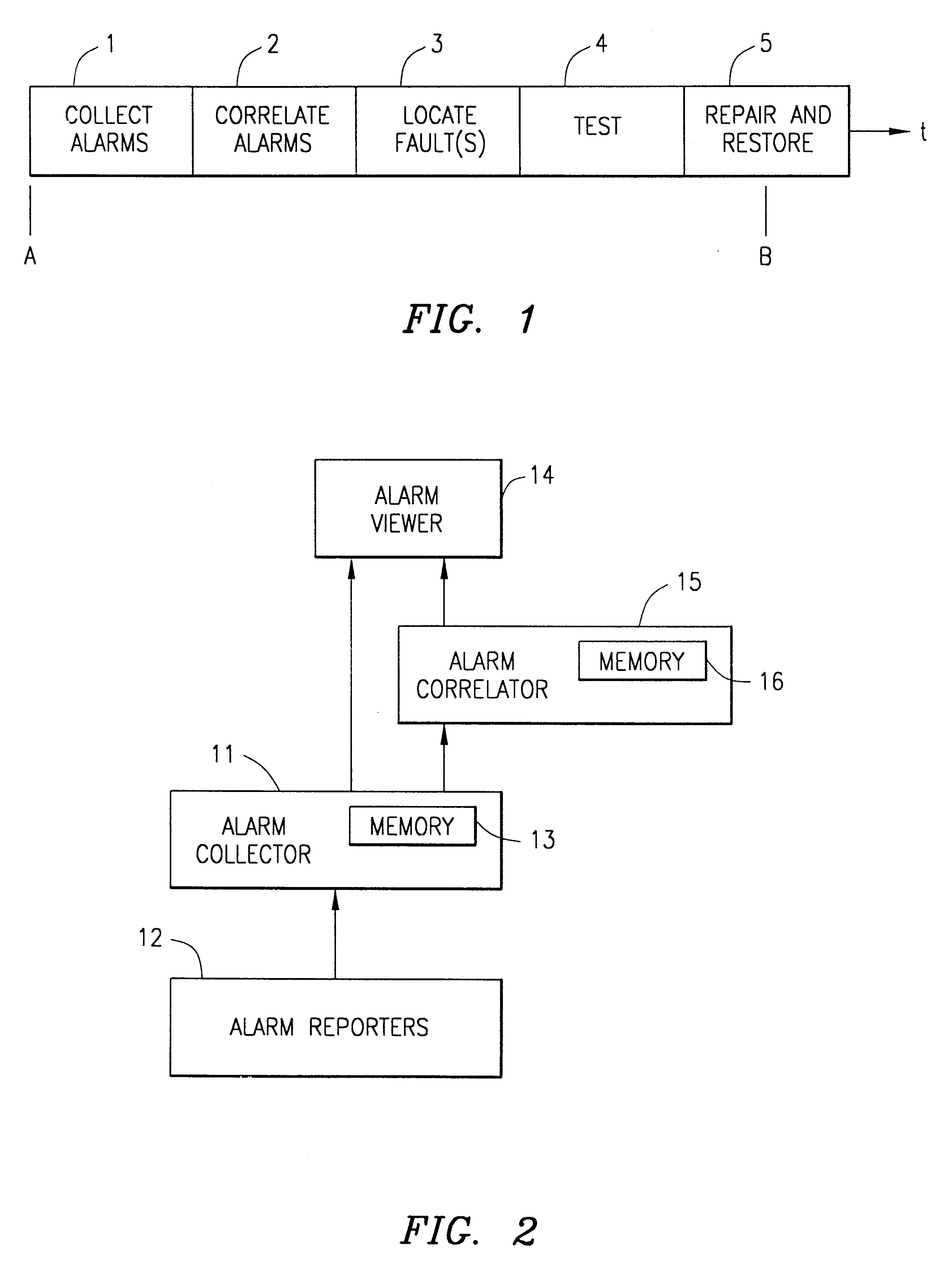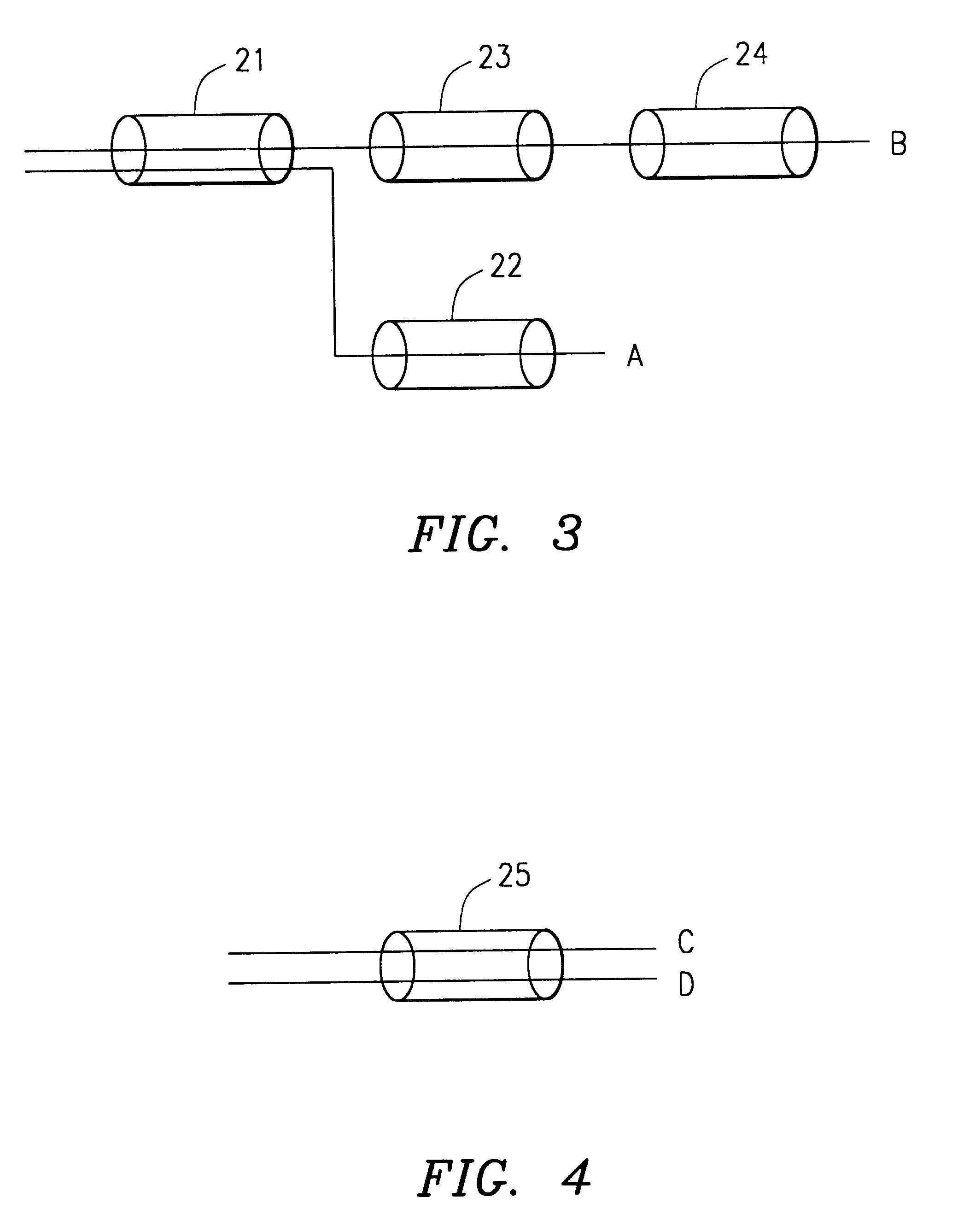Alarm correlation in a large communications network
a communication network and large communication network technology, applied in the field of software fault management systems, can solve the problems of large alarm volume, large alarm volume, and inability to identify and locate the responsible network faults,
- Summary
- Abstract
- Description
- Claims
- Application Information
AI Technical Summary
Problems solved by technology
Method used
Image
Examples
Embodiment Construction
The present invention is a method of partitioning alarms into sets in such a way that each set of alarms is probably caused by the same fault. The method utilizes network alarm propagation characteristics, alarm cause codes, network hierarchy (digital / analog hierarchy and equipment containment hierarchy), and network topology information to partition the alarms into sets. Presentation of alarms in partitioned sets reduces the time required to locate network faults so that more time can be spent fixing them. By assigning network operators to locate network faults based on alarm sets rather than alarm severity, alarm type, or reporting location, duplication of effort is reduced. The present invention greatly reduces computational time and resources required to provide rapid, consistent, and repeatable alarms correlation. Thereafter, the network operator may perform known fault location and identification techniques in a more accurate and efficient manner. The method of the present inv...
PUM
 Login to View More
Login to View More Abstract
Description
Claims
Application Information
 Login to View More
Login to View More - R&D
- Intellectual Property
- Life Sciences
- Materials
- Tech Scout
- Unparalleled Data Quality
- Higher Quality Content
- 60% Fewer Hallucinations
Browse by: Latest US Patents, China's latest patents, Technical Efficacy Thesaurus, Application Domain, Technology Topic, Popular Technical Reports.
© 2025 PatSnap. All rights reserved.Legal|Privacy policy|Modern Slavery Act Transparency Statement|Sitemap|About US| Contact US: help@patsnap.com



